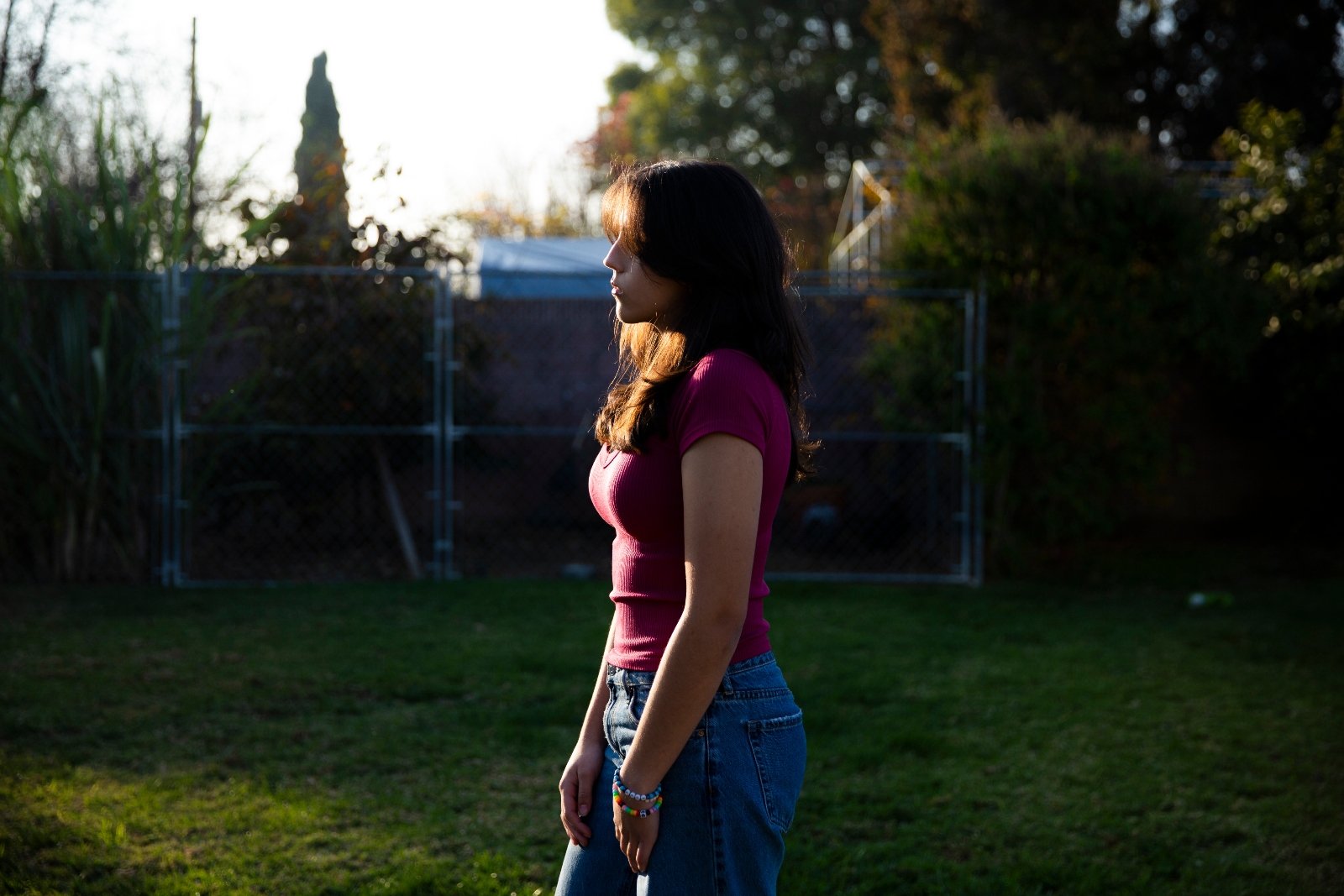We’ve all learn the tales and seen the photographs: The life-threatening warmth waves. The wildfires of unprecedented ferocity. The record-breaking storms washing away whole neighborhoods. The melting glaciers, the rising sea ranges, the coastal flooding.
As California wildfires stretch into the colder months and hurricane survivors kind by the ruins left by floodwaters, let’s discuss an underreported sufferer of local weather change: the emotional well-being of younger individuals.
A nascent however rising physique of analysis reveals that a big proportion of adolescents and younger adults, in america and overseas, really feel anxious and anxious concerning the influence of an unstable local weather of their lives right now and sooner or later.
Abby Rafeek, 14, is disquieted by the ravages of local weather change, each close to her residence and much away. “It’s undoubtedly affecting my life, as a result of it’s inflicting stress excited about the longer term and the way, if we’re not addressing the issue now as a society, our planet goes to worsen,” says Abby, a highschool scholar who lives in Gardena, California, a metropolis of 58,000 about 15 miles south of downtown Los Angeles.
She says wildfires are a selected fear for her. “That’s nearer to the place I dwell, so it’s an even bigger downside for me personally, and it additionally causes lots of injury to the encircling areas,” she says. “And in addition, the air will get tousled.”
In April, Abby took a survey on local weather change for youths ages 12-17 throughout a go to to the emergency room at Youngsters’s Hospital of Orange County.
Barbara Davidson for the Washington Put up)
Rammy Assaf, a pediatric emergency doctor on the hospital, tailored the survey from one developed 5 years in the past for adults. He administered his model final yr to over 800 children ages 12-17 and their caregivers. He says preliminary outcomes present local weather change is a severe reason behind concern for the emotional safety and well-being of younger individuals.
Assaf has adopted up with the children to ask extra open-ended questions, together with whether or not they imagine local weather change can be solved of their lifetimes; how they really feel after they examine excessive local weather occasions; what they give thought to the way forward for the planet; and with whom they’re able to focus on their issues.
“When requested about their outlook for the longer term, the primary phrases they’ll use are helpless, powerless, hopeless,” Assaf says. “These are very sturdy feelings.”
Assaf says he wish to see questions on local weather change included in psychological well being screenings at pediatricians’ workplaces and in different settings the place youngsters get medical care. The American Academy of Pediatrics recommends that counseling on local weather change be included into the medical observe of pediatricians and into medical faculty curriculums, however not with particular regard to psychological well being screening.
Assaf says anxiousness about local weather change intersects with the broader psychological well being disaster amongst youth, which has been marked by an increase in melancholy, loneliness, and suicide over the previous decade, although there are latest indicators it could be enhancing barely.

Jenna Schoenefeld for KFF Well being Information
A 2022 Harris Ballot of 1,500 U.S. youngsters discovered that 89 % of them often take into consideration the setting, “with the bulk feeling extra anxious than hopeful.” As well as, 69 % mentioned they feared they and their households can be affected by local weather change within the close to future. And 82 % mentioned they anticipated to should make key life selections — together with the place to dwell and whether or not to have youngsters — based mostly on the state of the setting.
And the influence is clearly not restricted to the U.S. A 2021 survey of 10,000 16- to 25-year-olds throughout 10 nations discovered “59 % had been very or extraordinarily anxious and 84 % had been at the least reasonably anxious” about local weather change.
Susan Clayton, chair of the psychology division on the Faculty of Wooster in Ohio, says local weather change anxiousness could also be extra pronounced amongst youthful individuals than adults. “Older adults didn’t develop up being as conscious of local weather change or excited about it very a lot, so there’s nonetheless a barrier to recover from to just accept it’s an actual factor,” says Clayton, who co-created the grownup local weather change survey that Assaf tailored for youthful individuals.
Against this, “adolescents grew up with it as an actual factor,” Clayton says. “Realizing you’ve the majority of your life forward of you provides you a really totally different view of what your life can be like.” She provides that youthful individuals specifically really feel betrayed by their authorities, which they don’t assume is taking the issue severely sufficient, and “this sense of betrayal is related to larger anxiousness concerning the local weather.”
Abby believes local weather change isn’t being addressed with enough resolve. “I feel if we work out the best way to dwell on Mars and discover the deep sea, we may undoubtedly work out the best way to dwell right here in a wholesome setting,” she says.

In case you are a guardian whose youngsters present indicators of local weather anxiousness, you possibly can assist.
Louise Chawla, professor emerita within the environmental design program on the College of Colorado-Boulder, says crucial factor is to pay attention in an open-ended method. “Let there be area for youths to precise their feelings. Simply take heed to them and allow them to comprehend it’s protected to precise these feelings,” says Chawla, who co-founded the nonprofit Rising Up Boulder, which works with the town’s faculties to encourage children to interact civically, together with to assist form their native setting.
Chawla and others suggest household actions that reinforce a dedication to the setting. They are often so simple as strolling or biking and taking part in cleanup or recycling efforts. Additionally, encourage your youngsters to hitch actions and advocacy efforts sponsored by environmental, civic, or spiritual organizations.
Working with others may also help alleviate stress and emotions of powerlessness by reassuring children they don’t seem to be alone and that they are often proactive.
Worries about local weather change ought to be seen as a studying alternative which may even lead some children to their life’s path, says Vickie Mays, professor of psychology and well being coverage at UCLA, who teaches a category on local weather change and psychological well being — certainly one of eight comparable programs supplied lately at UC campuses.
“We should always get out of this behavior of ‘the whole lot’s a psychological well being downside,’” Mays says, “and perceive that always a problem, a stress, a fear may be changed into advocacy, activism, or a attain for brand spanking new data to alter the state of affairs.”
KFF Well being Information is a nationwide newsroom that produces in-depth journalism about well being points and is without doubt one of the core working packages at KFF—an impartial supply of well being coverage analysis, polling, and journalism. Be taught extra about KFF.





